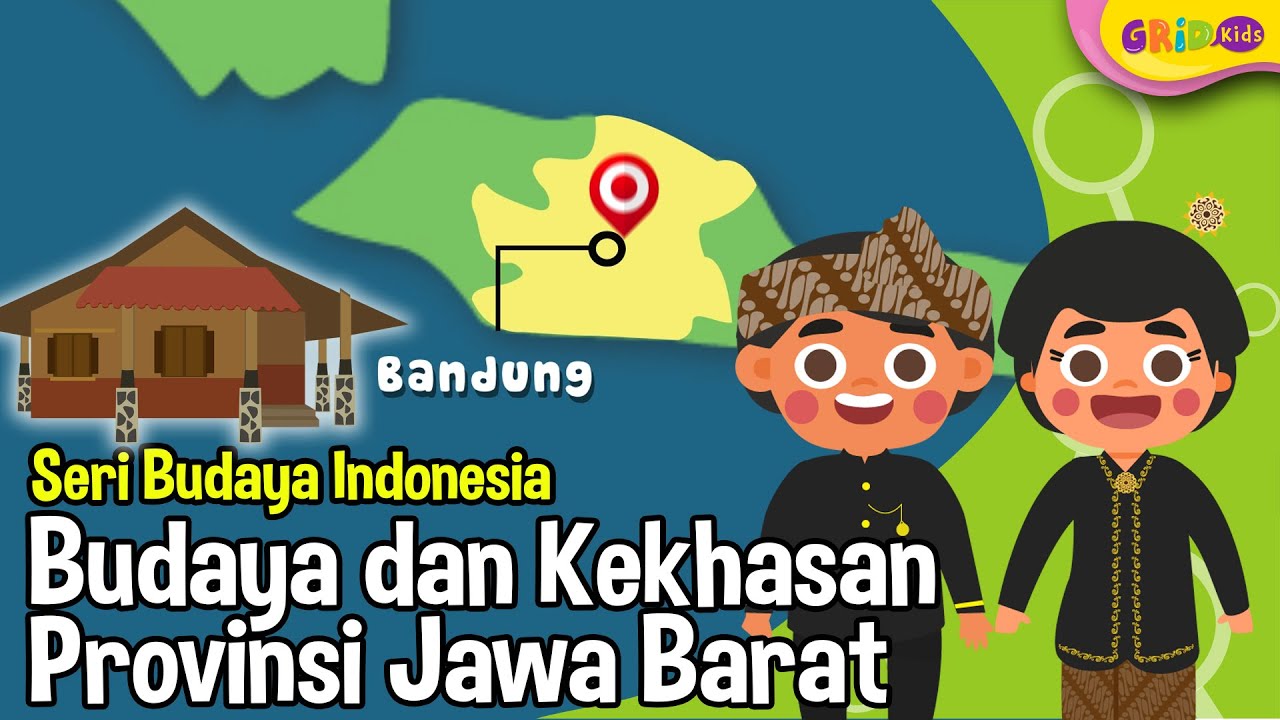Sejarah Parahyangan Atau Priyangan
Summary
TLDRThis video explores the history of Parahyangan (Priangan), a mountainous region in West Java, Indonesia, known for its rich Sundanese culture. The name Parahyangan, meaning 'the place where the gods dwell,' reflects its sacred status in ancient Sundanese beliefs. The video traces the region's evolution, from the Sundanese Kingdom to its division after the fall of Pakuan, leading to the rise of the Sumedang Larang and Galuh kingdoms. The script delves into the complex political shifts, including the influence of the Mataram Sultanate and the struggles of local rulers like Dipati Ukur, highlighting Priangan's cultural and historical significance.
Takeaways
- 😀 Parahyangan, also known as Priangan, is a mountainous region in West Java, Indonesia, where the Sundanese culture dominates.
- 😀 The term Parahyangan is derived from the Sundanese words 'Pak' (place) and 'Rahyangan' (gods), meaning 'place of the gods.'
- 😀 Sundanese people believed that the mountains were sacred and inhabited by the spirits of ancestors and gods.
- 😀 According to legend, the land of Priangan was blessed when Sadewa smiled and poured blessings upon it, symbolizing fertility and prosperity.
- 😀 Before falling under the rule of Mataram, Priangan's territory extended between the Cipamali and Cisadane Rivers, excluding Pakuan Pajajaran and Cirebon.
- 😀 After the fall of the Kingdom of Sunda to the Sultanate of Banten, Priangan was divided into the Kingdoms of Sumedang Larang and Galuh.
- 😀 The Kingdom of Sumedang Larang was ruled by Prabu Geusan Ulun from 1580 until his death in 1808, and later passed to his adopted son, Raden Aria Suriadiwangsa.
- 😀 In 1620, Raden Aria Suriadiwangsa was appointed as the Bupati of Priangan by Sultan Agung of Mataram.
- 😀 Dipati Ukur, the Bupati of Priangan, rebelled in 1632 after failing to meet Mataram's demands but was ultimately subdued with Mataram's help.
- 😀 The region of Priangan was influenced by the political power struggles between Mataram, Banten, and the VOC, leading to changes in governance over time.
Q & A
What is Parahyangan, and why is it important in Sundanese culture?
-Parahyangan, also known as Priangan, is a mountainous region in West Java, Indonesia, where Sundanese culture is dominant. It holds great significance in Sundanese culture as a sacred place, believed to be the home of ancestral spirits or gods.
What does the name 'Parahyangan' mean?
-The name 'Parahyangan' is derived from the combination of the words 'Pak' (place) and 'rahyang' or 'hiang' (gods or ancestral spirits), meaning 'place of the gods.'
How does the legend of Sadewa relate to the creation of Priangan?
-According to the legend, the land of Priangan was created when Sadewa smiled, blessing the land with prosperity and fertility, symbolizing the region’s natural abundance and beauty.
What was the extent of Priangan’s territory before Mataram's rule?
-Before Mataram's rule, Priangan extended between the Cipamali River in the east and the Cisadane River in the west, excluding the areas of Pakuan, Pajajaran, and Cirebon.
How was Priangan divided after the fall of the Sunda Kingdom?
-After the fall of the Sunda Kingdom, Priangan was divided into two kingdoms: Sumedang Larang and Galuh.
Who was Prabu Geusan Ulun, and what was his role in the history of Sumedang Larang?
-Prabu Geusan Ulun was the leader of the Sumedang Larang Kingdom from 1580 to 1808. He played a significant role in establishing the kingdom, and after his death, his power was passed on to his son-in-law, Raden Aria Suriadiwangsa.
Why did Raden Aria Suriadiwangsa submit to Mataram, and what was the outcome?
-Raden Aria Suriadiwangsa submitted to Mataram in 1620 because the Sumedang Larang Kingdom was surrounded by Mataram, Banten, and the VOC. This submission led to the dissolution of Sumedang Larang, and it was absorbed into Mataram as part of the Priangan regency.
What role did Pangeran Rangga Gempol play in Priangan's history?
-Pangeran Rangga Gempol was appointed by Sultan Agung to govern Priangan and was tasked with conquering Madura and Sumedang. However, after failing in these missions, he was arrested, and Dipati Ukur took over the region.
What caused Dipati Ukur's rebellion, and how was it resolved?
-Dipati Ukur rebelled after failing to capture Batavia as required by Sultan Agung. His rebellion was eventually crushed in 1632, and control of Priangan was restored to Rangga Gempol.
What is the significance of the term 'Wedana Bupati' in the history of Priangan?
-The term 'Wedana Bupati' refers to the position of local regent or administrator of the Priangan region under Mataram's control. It was a role held by prominent figures such as Pangeran Rangga Gempol and Dipati Ukur, who governed large territories within Priangan.
Outlines

This section is available to paid users only. Please upgrade to access this part.
Upgrade NowMindmap

This section is available to paid users only. Please upgrade to access this part.
Upgrade NowKeywords

This section is available to paid users only. Please upgrade to access this part.
Upgrade NowHighlights

This section is available to paid users only. Please upgrade to access this part.
Upgrade NowTranscripts

This section is available to paid users only. Please upgrade to access this part.
Upgrade NowBrowse More Related Video

Budaya dan Kekhasan Provinsi Jawa Barat - Seri Budaya Indonesia

SUKU SUNDA - VIDEO EXPLAINER

Menyelami Seni Karawitan Sunda

S1 KURMER SMA 12 BAHASA SUNDA BAB 1 WAYANG

Asal Usul Kota Subang Jawa Barat - Kisah Nyai Subang Larang

Mengenal Kebudayaan Jawa Barat . Sistem Kehidupan Orang Sunda Dari Bahasa Hingga Kesenian
5.0 / 5 (0 votes)